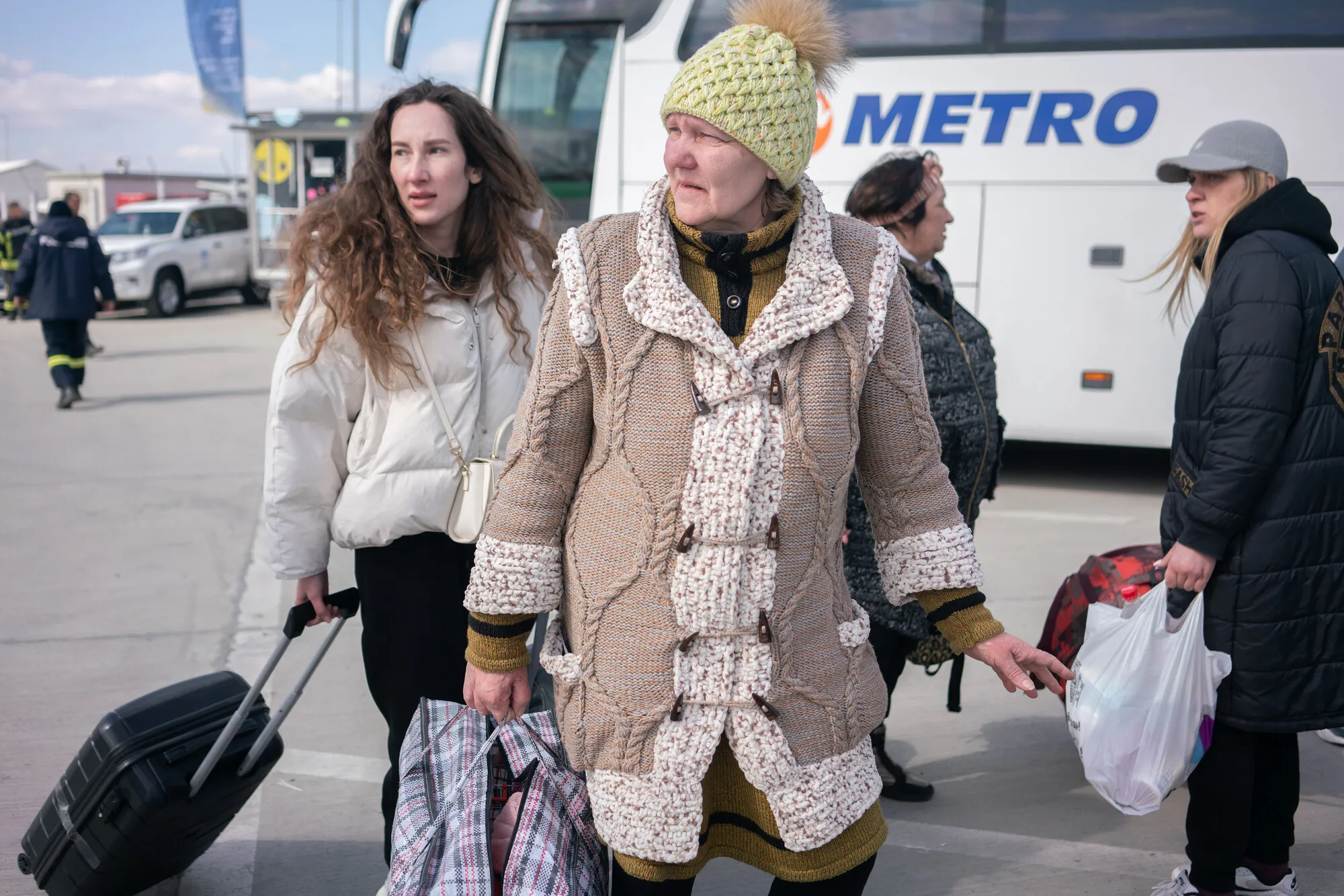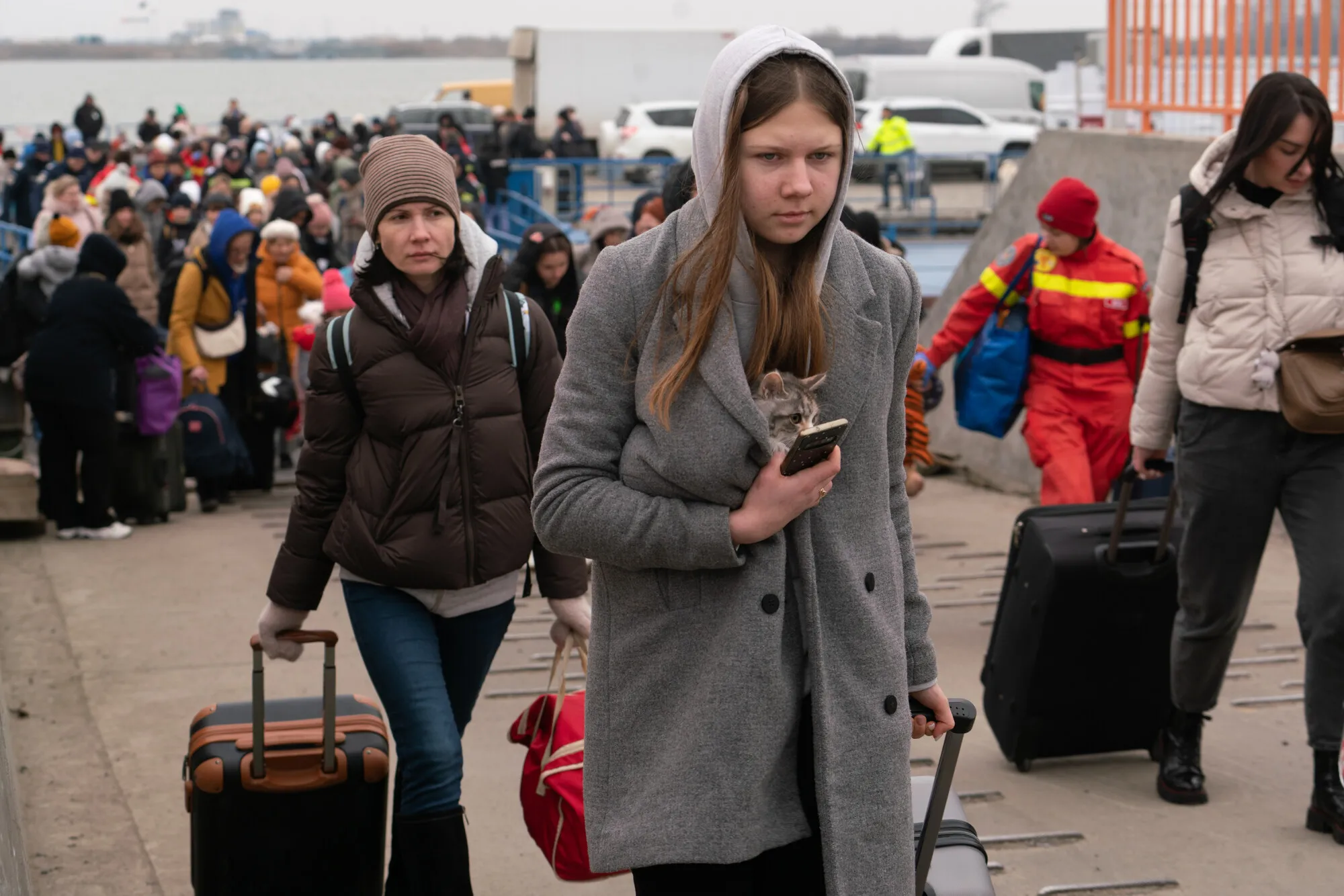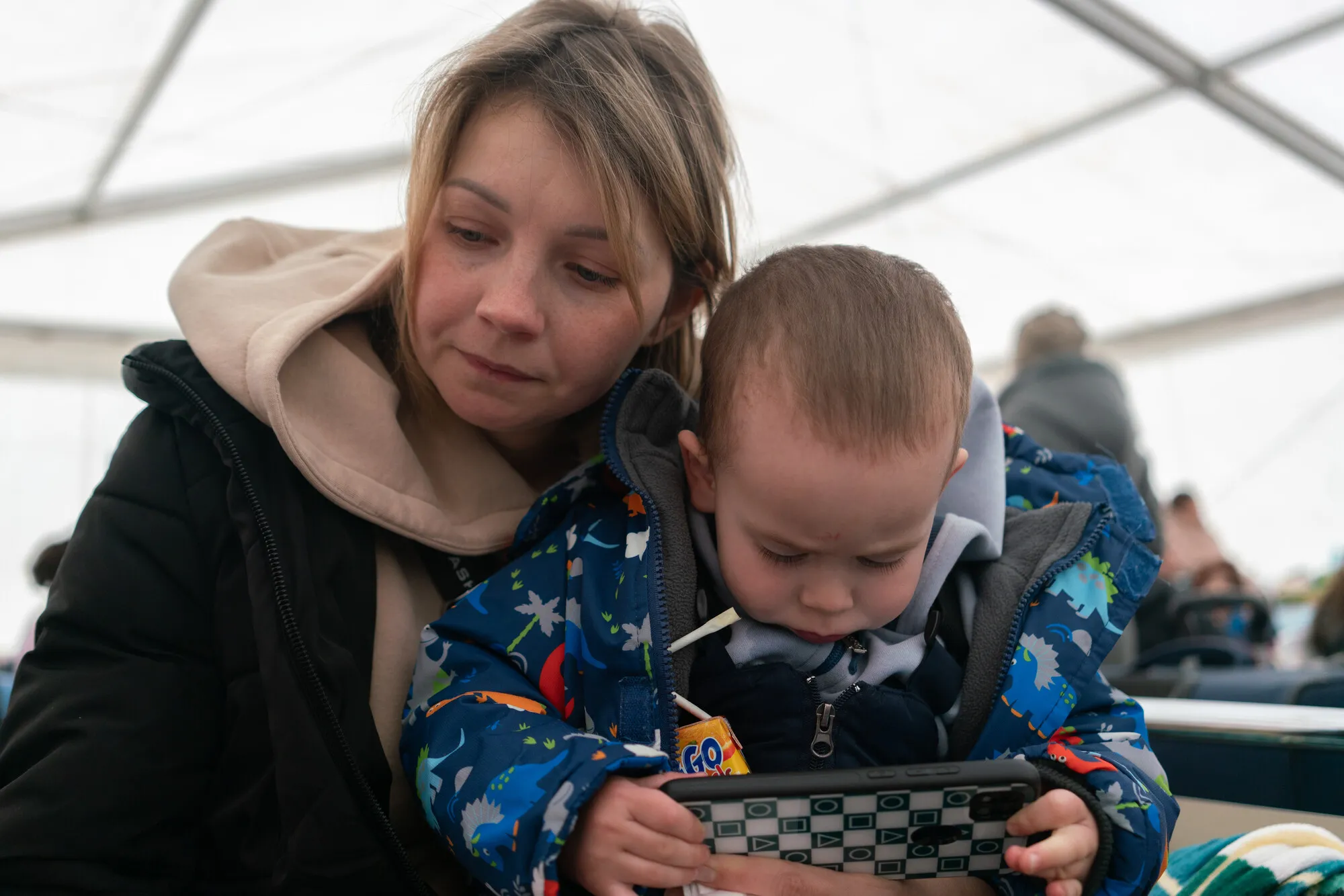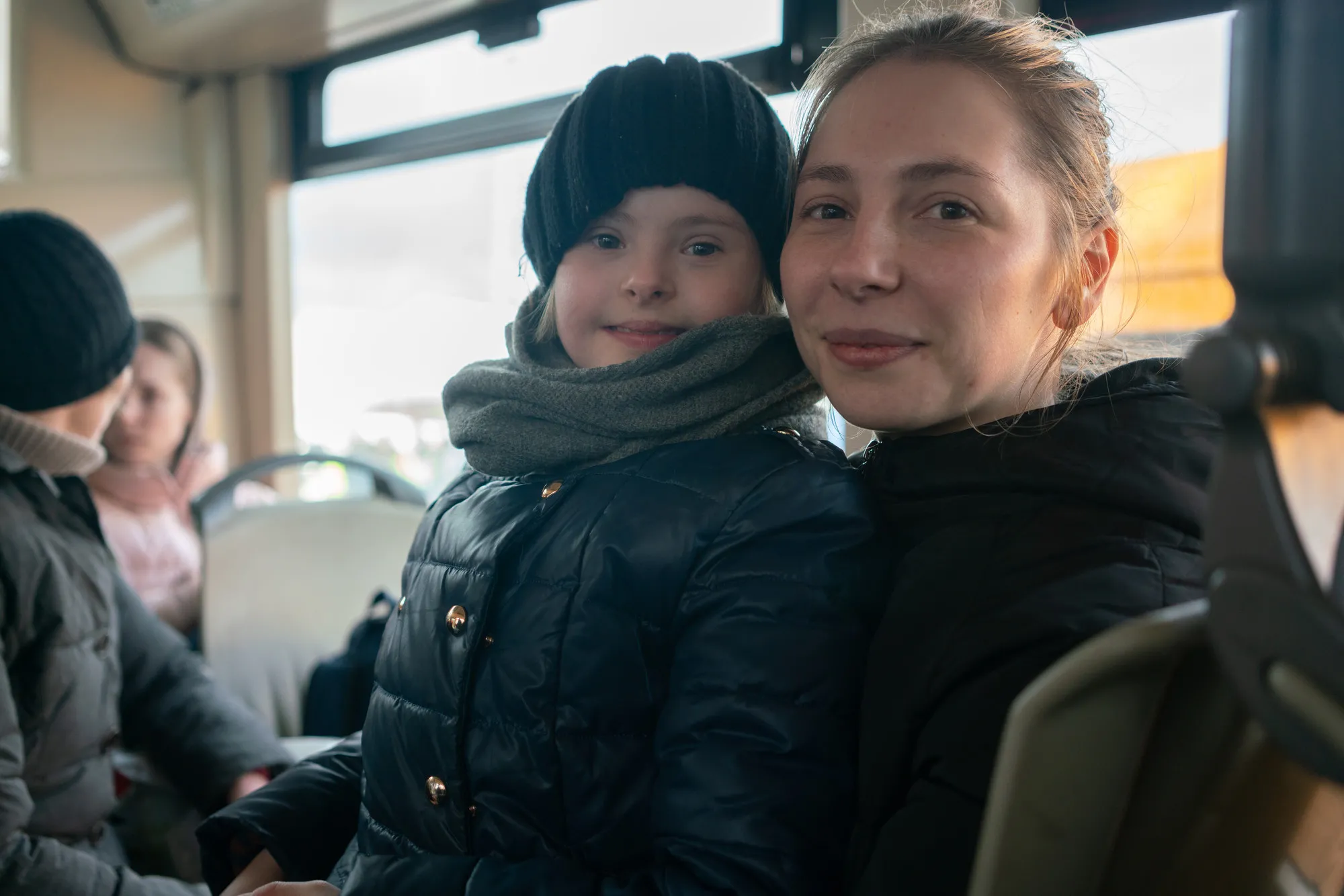As with all conflicts, the crisis in Ukraine is disproportionately affecting women and girls, both within the country and those fleeing across borders. Just one month since war broke out, CARE has identified five key areas where more support and attention are urgently needed for Ukrainian women and girls.
Exploitation, abuse and trafficking
When populations become wholly reliant on other people to fulfil their basic needs, this can make them extremely vulnerable to various forms of exploitation and abuse, including trafficking.
“Currently the incidents of trafficking we are aware of are anecdotal, which is concerning,” said CARE’s humanitarian advocacy coordinator Delphine Pinault. “The lack of information and processes to register and track people arriving in neighboring countries from Ukraine is extremely worrying. While it is important to avoid long queues at borders, a minimum of personal information on people fleeing (name, sex, age) must be registered at border crossings and in the countries where Ukrainians are fleeing.”
“Without this, there are real risks that exhausted, shocked and traumatized women and children — already in increasingly desperate conditions — face yet more abuse. We are particularly concerned about unaccompanied and separated children trafficking risks,” Pinault continued.




